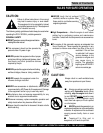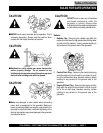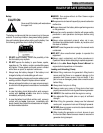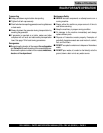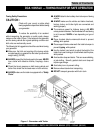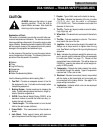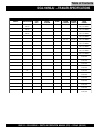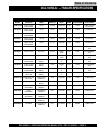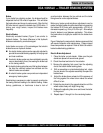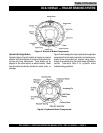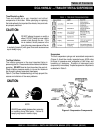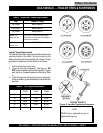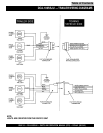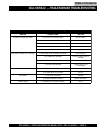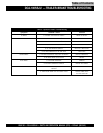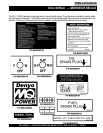
PAGE 14 — DCA-100SSJU — PARTS AND OPERATION MANUAL (STD) — REV. #2 (05/03/01)
DCA-100SSJU — TRAILER BRAKING SYSTEM
Brakes
If your trailer has a braking system, the brakes should be
inspected the first 200 miles of operation. This will allow
the brake shoes and drums to seat properly. After the first
200 mile interval, inspect the brakes every 3,000 miles. If
driving over rough terrain, inspect the brakes more
frequently.
Electric Brakes
Electrically actuated brakes (Figure 2) are similar to
hydraulic brakes. The basic difference is that hydraulic
brakes are actuated by an electromagnet.
Listed below are some of the advantages that electric
brakes have over hydraulic brakes:
!
An electric brake system can be manually adjusted to
provide the corrected braking capability for varying road
and load conditions.
!
An electric brake system can be modulated to provide
more or less braking force, thus easing the brake load
on the towing vehicle.
!
An electric brake system has very little lag time between
the time the vehicle’s brakes are actuated and the
trailer’s brakes are actuated.
!
An electric brake system can provide an independent
emergency brake system.
Road testing is necessary in order to properly synchronize
the towing vehicle’s braking to the trailer’s braking. Brake
lockup, grabbiness, or harshness is due to lack of
synchronization between the tow vehicle and the trailer
being towed or under-adjusted brakes.
Before any brake synchronizations adjustments can be
made, the trailer brakes should be burnished-in by applying
the brakes 20-30 times with approximately a 20 m.p.h.
decrease in speed, e.g. 40 m.p.h. to 20 m.p.h.. Allow ample
time for brakes to cool between application. This allows
the brake shoes to slightly be seated into the brake drum
surface.
Figure 2 displays the major electric brake components that
will require inspection and maintenance. Please inspect
these components as required. Refer to Table 5 for electric
brake troubleshooting guidelines.
Electric Brake Adjustment
1. Place the trailer on jack stands. Make sure the jack
stands are placed on secure level ground.
2. Check the wheel and drum for free rotation.
3. Remove the adjusting hole cover from the adjusting
slot at the bottom brake backing plate.
4. With a screwdriver or standard adjusting tool, rotate
the star wheel of the adjuster assembly to expand the
brake shoes.
5. Adjust the brake shoes outward until the pressure of
the lining against the wheel drum makes the wheel
difficult to turn.
6. Rotate the star wheel in the opposite direction until the
wheel rotates freely with slight lining drag.
7. Replace the adjusting hole cover and lower the trailer
to the ground.
8. Repeat steps 1 through 6 on the remaining brakes.
Table of Contents



